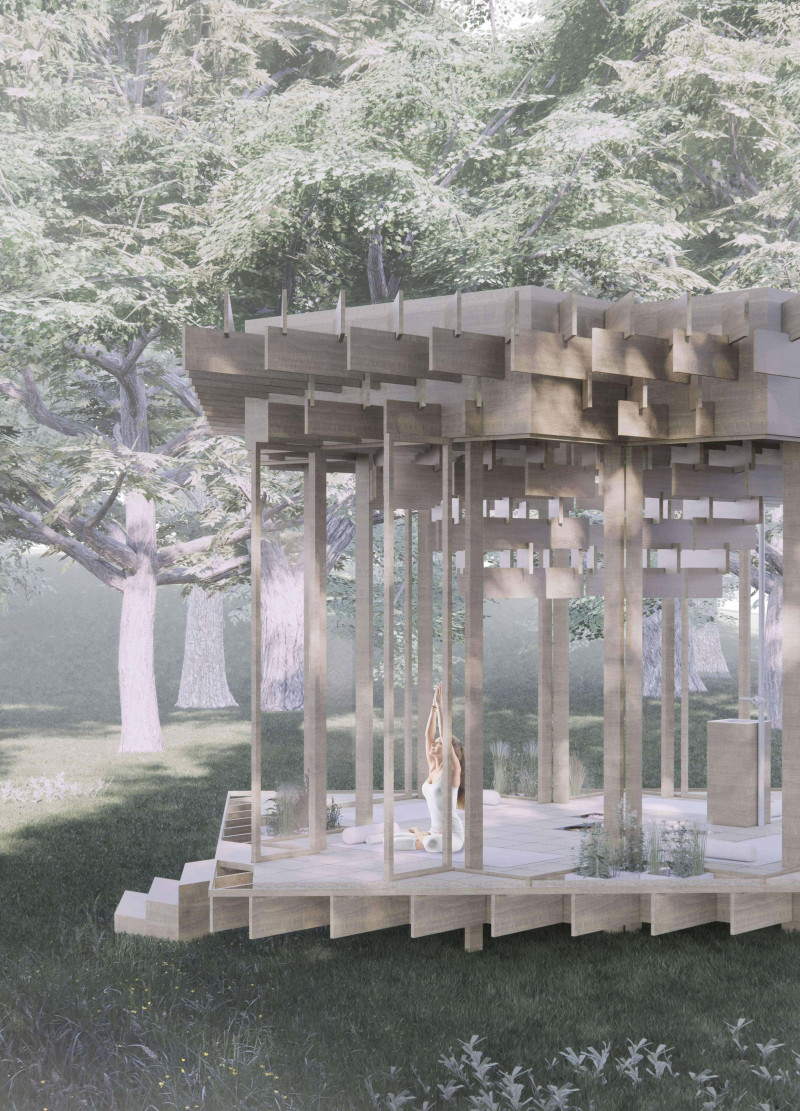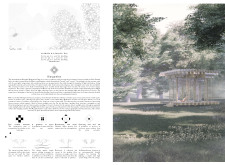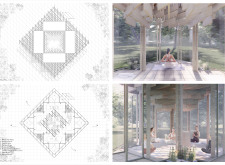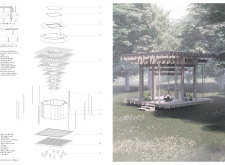5 key facts about this project
The design philosophy emphasizes sustainability and ecological sensitivity through the careful selection of materials and construction techniques. Key materials include bamboo and timber for framing, large glass panels for transparency and light infiltration, and stone for the flooring, providing thermal mass. The combination of these materials fosters a warm and inviting interior while ensuring durability and minimal environmental impact.
Natural light plays a significant role in the cabin's design. The sloping canopy captures sunlight throughout the day, creating a dynamic interior atmosphere that evolves with the changing light conditions. Operable skylights facilitate natural ventilation and reinforce the connection to the external environment, blurring the lines between the indoors and outdoors.
Sustainable features include integrated planters for flora growth and rainwater capture, effectively contributing to the local ecosystem. These elements not only enhance the aesthetic appeal but also serve functional purposes, aligning with principles of ecological architecture.
Unique Aspects of Design
The Kaupeka Meditation Cabin distinguishes itself from typical meditation spaces through its distinctive design approaches. The integration of a sylvatic canopy is particularly noteworthy, as it provides shade while also serving as a rainwater collection system. This innovative roof structure mimics the natural forms of tree canopies and offers a serene environment for users.
Moreover, the design incorporates zones that cater to both communal activities and solitary reflection, allowing for flexible use. The layout encourages social interaction while maintaining personal space, addressing the diverse needs of potential users. This duality enhances the cabin's usability and draws individuals into deeper engagement with the meditative experience.
Another key feature is the careful arrangement of openings and ventilation pathways that promote airflow, ensuring comfort without the need for mechanical systems. The strategic placement of windows not only maximizes natural light but also frames views of the landscape, inviting the environment into the space.
Integration of Local Context
The cabin's architecture is deeply rooted in its geographical context, celebrating New Zealand's biodiversity. The design resonates with cultural significance by reflecting indigenous principles that honor the land and its resources. The careful landscaping surrounding the cabin enhances this connection, promoting a seamless transition from the natural environment to the architectural space.
For those interested in understanding the architectural details further, exploring the architectural plans, sections, and designs of the Kaupeka Meditation Cabin will provide deeper insights into the project’s innovative features and conceptual foundations. Engaging with these elements will enhance appreciation for the careful thought that underpins this harmonious blend of architecture and nature.


























